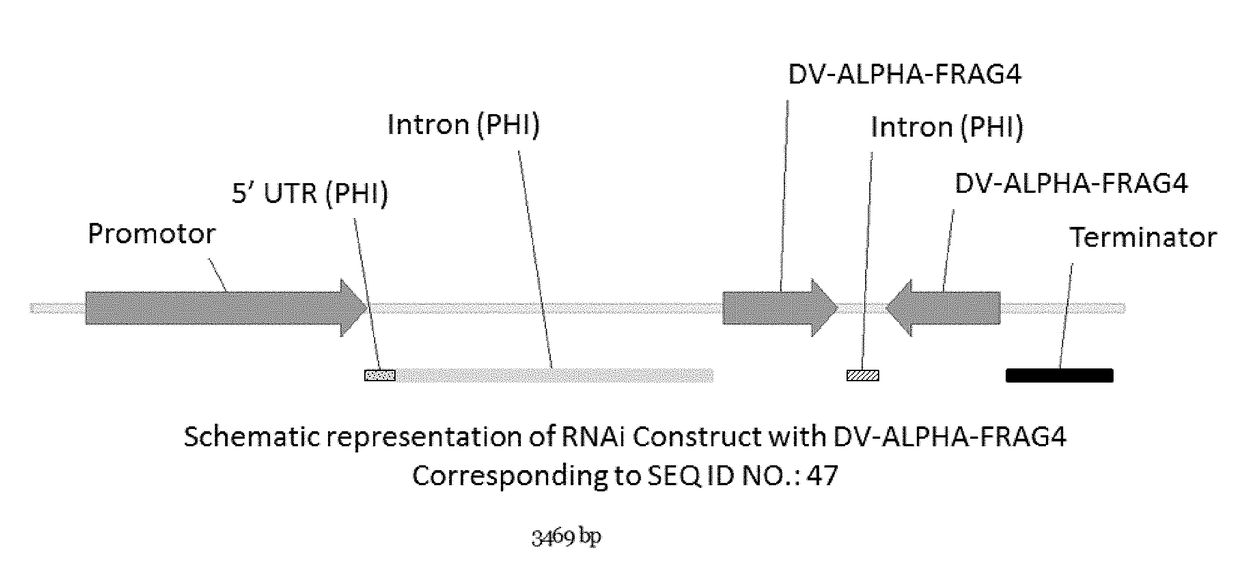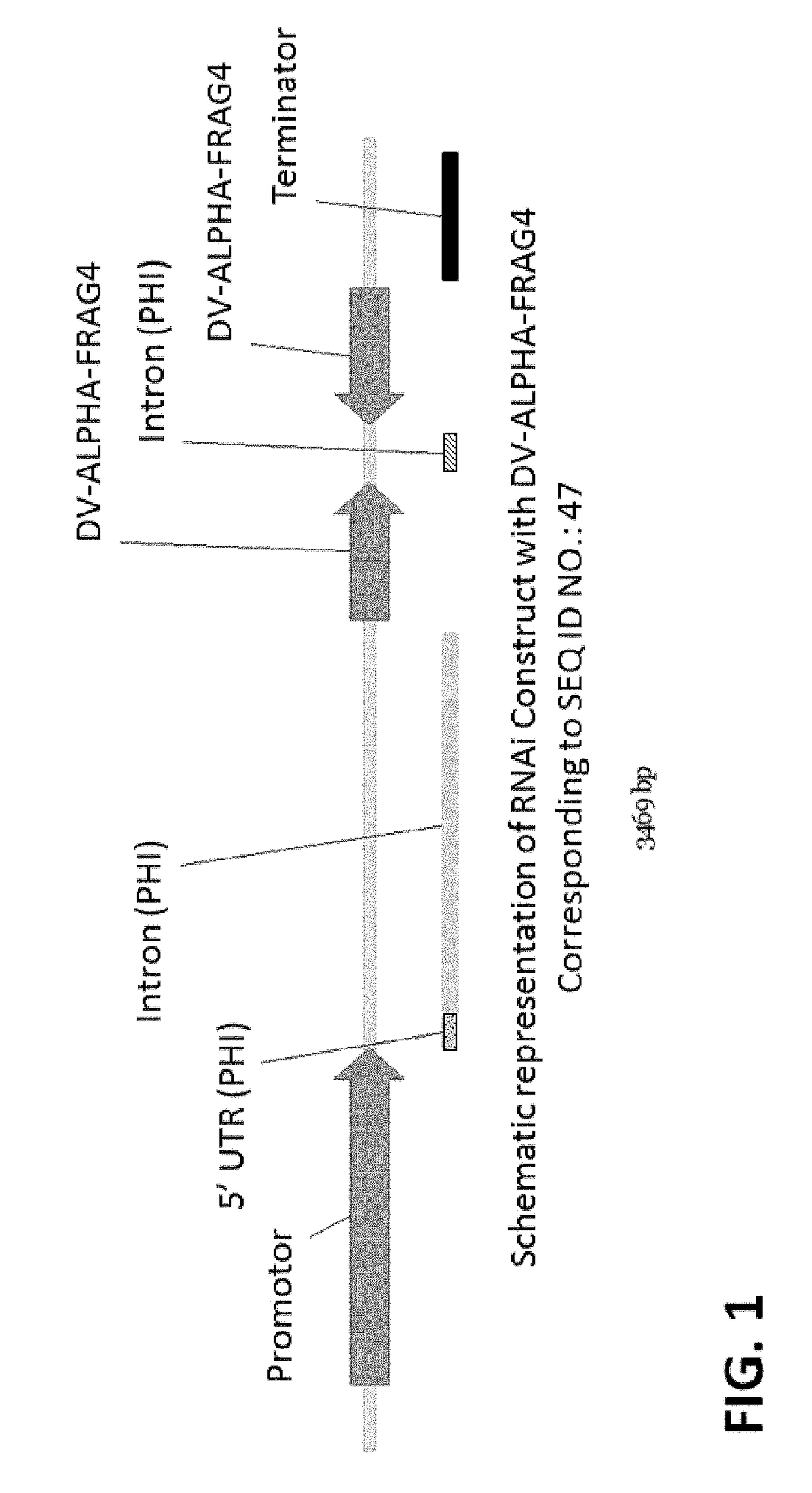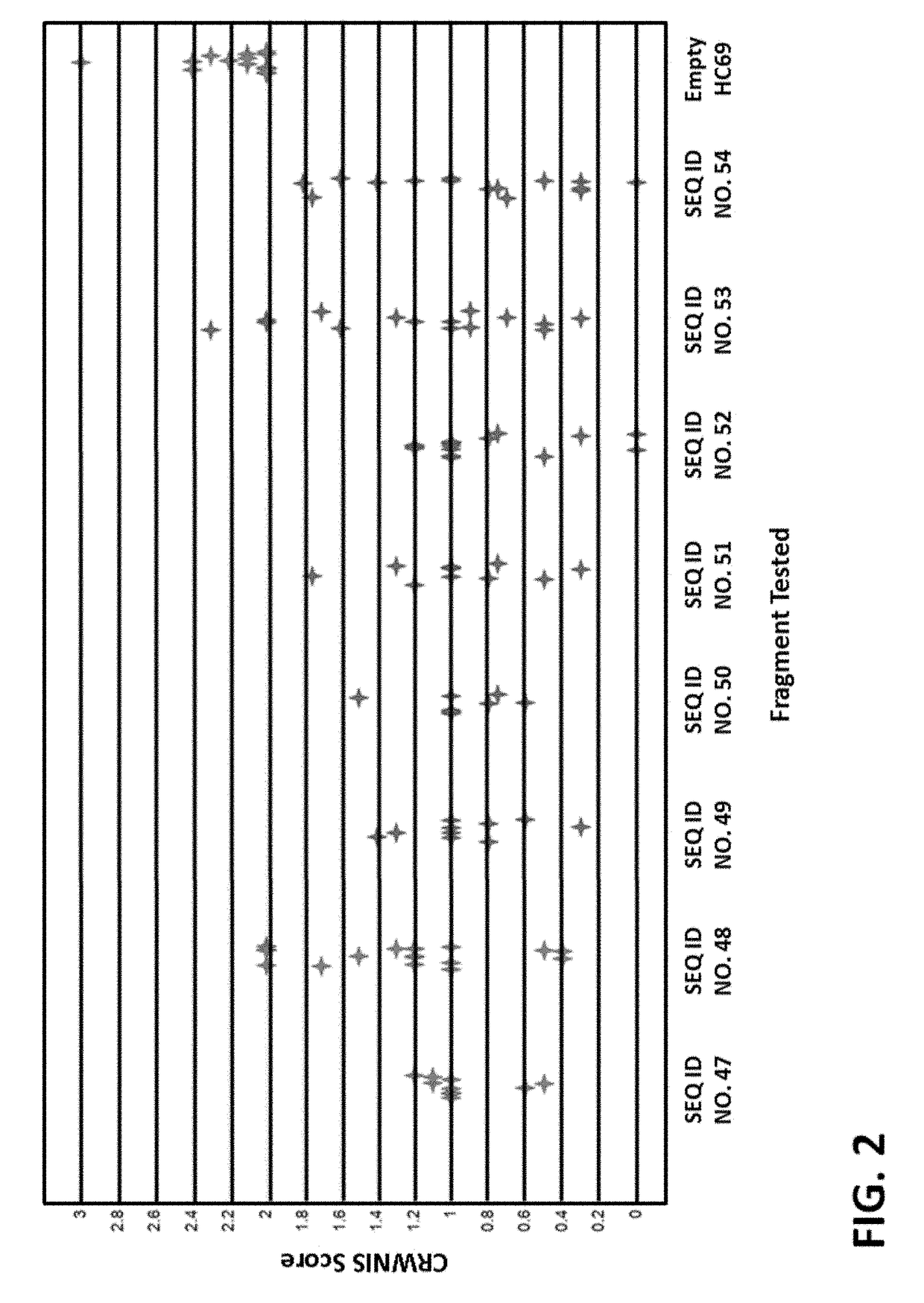Compositions and methods to control insect pests
a technology of molecular biology and pests, applied in the field of molecular biology and gene silencing to control pests, can solve the problems of destroying millions of acres of staple crops, $100 billion dollars in crop damage, plant insect pests are serious problems, etc., and achieve the effect of reducing the level of a target sequence, controlling the pest, and reducing the level of the target sequen
- Summary
- Abstract
- Description
- Claims
- Application Information
AI Technical Summary
Benefits of technology
Problems solved by technology
Method used
Image
Examples
example 1
[0196]Nucleic acid sequences disclosed herein comprise the following nucleic acid sequences. Certain sequences are exemplary and were shown to have insecticidal activity against corn rootworms using the assay methods described in Example 1 as set forth below. Such sequences or their complements can be used in the methods as described herein above and below. Methods for making inhibitory sequences are known in the art. DNA constructs, vectors, transgenic cells, plants, seeds or products described herein may comprise one or more of the following nucleic acid or amino acid sequences, or a portion of one or more of the disclosed sequences. Non-limiting examples of target polynucleotides are set forth below in Table 1, or variants and fragments thereof, and complements thereof, including, for example, SEQ ID NOs.: 1-17, and variants and fragments thereof, and complements thereof, and SEQ ID NOs.: 18-84, and variants and fragments thereof, and complements thereof. The list of sequences re...
example 2
In Vitro Transcription (IVT) and dsRNA Insect Bioassays
[0197]Different target selection strategies were used to identify RNAi active targets with insecticidal activities in corn rootworm diet based assay. cDNA libraries were produced from neonate or midgut of 3rd instar western corn rootworm larvae by standard methods. Randomly selected cDNA clones containing an expressed sequence tag (EST) were amplified in a PCR using target specific primers (see Table 2 for forward and reverse primer sequences) to generate DNA template. The target specific primers also contain T7 RNA polymerase sites (T7 sequence at 5′ end of each primer). Previous random cDNA screening identified several coatomer cDNAs as RNAi active targets (see US Publ. No. US20110054007 A1; seq No. 321 and 501 or seq No. 324 and 504). To identify additional genes from corn rootworm that had RNAi activity, transcriptome experiments were completed using 3rd instar larvae from Western corn rootworm (“WCRW”; Diabrotica virgifira)...
example 3
Target Fragments Search for Improved Insecticidal Activities
[0199]Subregions of efficacious dsRNAs were designed to evaluate insecticidal activities in diet and dsRNA expression in planta. These fragments were assayed in the same manner as the original FIS assays described above. Regions demonstrating a severe impact on larval phenotype (mortality or severe growth retardation) were advanced to primary inhibitory concentration (IC50) assays. IC50 assays used doses starting at 50 ppm and progressed downward by ½ step dilutions through 25, 12.5, 6, 3, 1.5, and 0.75 ppm. 12 observations were included for each rate. Assay methods were the same as described above for primary screens. Calculations of inhibition relied on scoring for both mortality and severe stunting. Data for representative informal IC50 assays are shown below in Table 3.
TABLE 3Western Corn Rootworm Primary IC50 Assay Results.SEQ IDIC50NO.Fragment Name(ppm)21DV-ALPHA-FRAG40.062622DV-ALPHA-FRAG50.0819624DV-ALPHA-FRAG80.002...
PUM
| Property | Measurement | Unit |
|---|---|---|
| RH | aaaaa | aaaaa |
| RH | aaaaa | aaaaa |
| acid | aaaaa | aaaaa |
Abstract
Description
Claims
Application Information
 Login to View More
Login to View More - R&D
- Intellectual Property
- Life Sciences
- Materials
- Tech Scout
- Unparalleled Data Quality
- Higher Quality Content
- 60% Fewer Hallucinations
Browse by: Latest US Patents, China's latest patents, Technical Efficacy Thesaurus, Application Domain, Technology Topic, Popular Technical Reports.
© 2025 PatSnap. All rights reserved.Legal|Privacy policy|Modern Slavery Act Transparency Statement|Sitemap|About US| Contact US: help@patsnap.com



